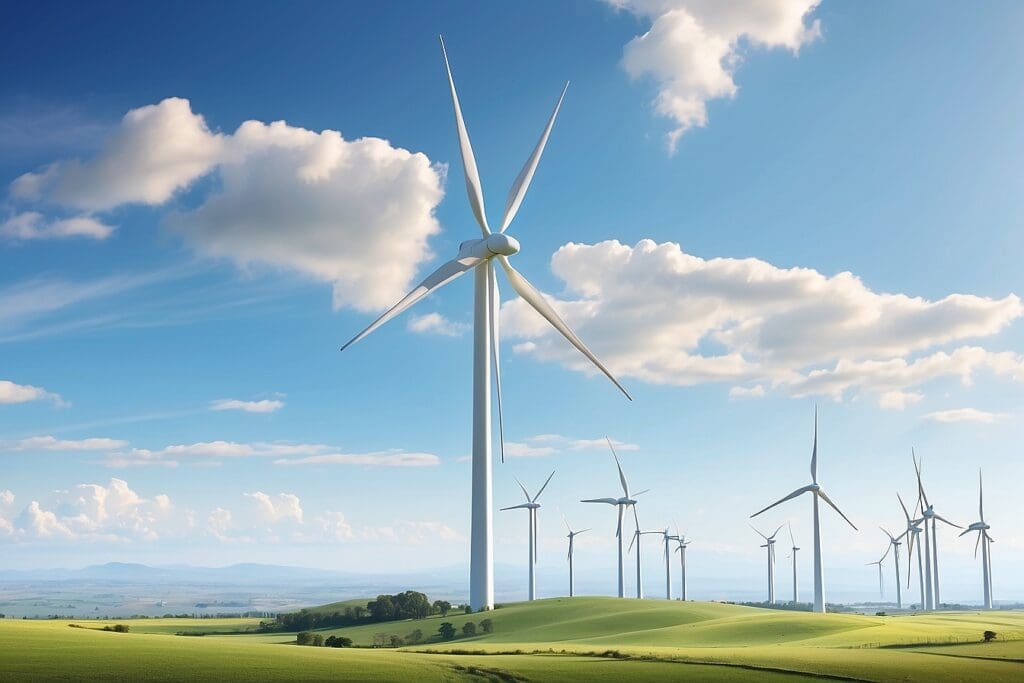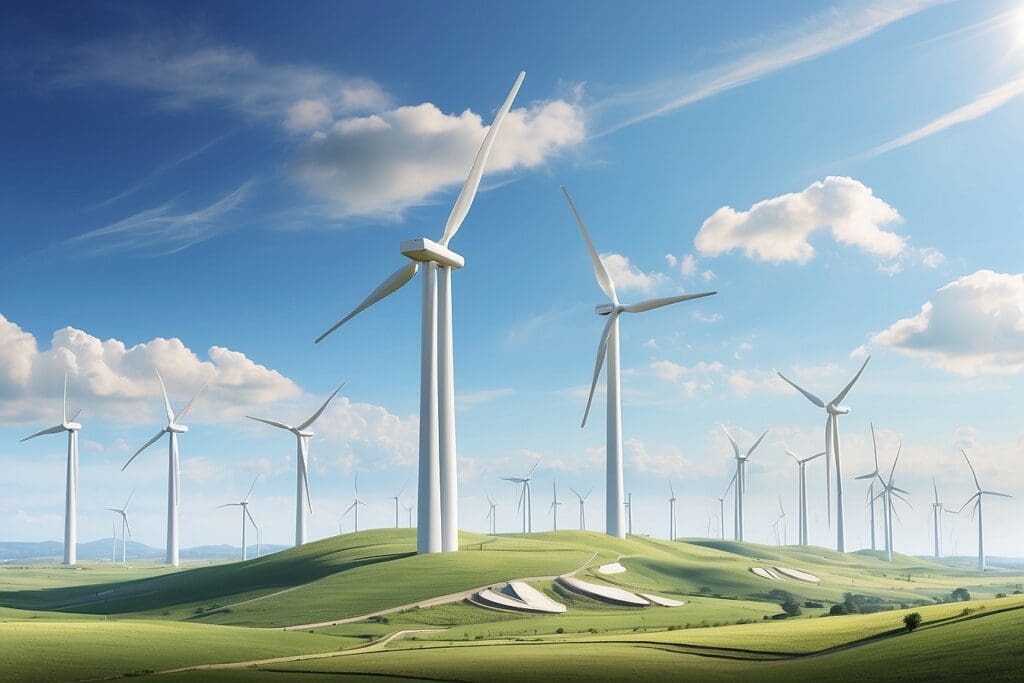From the birth of the sail that discovered the Americas to the agricultural revolution that centered on the windmill, wind energy has changed the world for centuries. Today, a different kind of revolution is taking place as the search for domestically available wind energy’s prominence has, in a sense, been resurrected as nations and technologists look for viable ways to use one of Mother Nature’s convective resources at its disposal. Today’s technology, however, is a far cry from simple mechanical devices of the past and this article looks at the new developments that may make wind energy the thing of the future.
Limitations on Wind Power
While newer technologies have been growing for wind power, fundamental physical laws place limits on the efficiency deliverable by wind turbines that rely on rotor blades to generate electricity. Wind farms have been seen in countless open fields and even oceanic offshore platforms, and the most common sight has been enormous three bladed fiberglass fans that seamlessly spin with the winds. While such wind turbines are the most widely used, they are limited by what is known as Betz Limit or Betz’ Law, which sets the maximum theoretical yield from a rotor at 59.3 percent.2 In the real world, however, after factoring in frictional forces from the mechanical gears and various other power transfer limitations, the best efficiency from a wind turbine hovers from 10 to 30 percent.3 Therefore, new schemes of organization and technologies are needed to best harvest wind energy. For a more in depth discussion on challenges facing both the wind and solar power industries, read here .
Vertical Axis Wind Turbine
For decades the horizontal axis wind turbine has dominated landscapes across the world in the form of a three bladed propeller that spins about a horizontal axis to produce electricity. In 2013, this technology has certainly become antiquated, and numerous companies and research institutions have begun searching for ways to resurrect the competing design—vertical axis wind turbine—from cost based extinction.5 The most basic difference between the two technologies is in the axis of rotation, which would be vertical in the case of a vertical axis turbine versus horizontal in the turbines we have erected until now. This crucial difference calls for very different designs, designs that had become very inefficient and costly in the 1980s.6
One of the most promising prototypes is that of a vertical axis turbine from a startup known as Windspire.7 This Windspire turbine is said to produce 2000 Kilowatt-hours per year for 12 miles per hour average wind speeds. Apart from achieving potentially high energy yields8, vertical axis turbines are also being explored on a practicality basis. It is much more feasible to pack many vertical spinning turbines together as opposed to horizontal axis turbines. The added benefits of vertical axis turbines are that they are operational at all wind direction, are much more bird and bat friendly given the lower spin speeds, which also makes it very quiet, thus negating the noise problem associated with wind energy.9
Turbofan Design

It would be hard to believe that the modern aero plane, a gas guzzling behemoth of the skies, would be an inspiration for wind turbine design. Most commercial jet aircraft are powered by turbofan engines that act to compress air using a large array of rotor blades configured in tandem, which is then ignited in the presence of jet fuel to produce thrust.10 The design of this engine that relies on efficient air compressions has attracted companies such as FloDesign11 to design wind turbines composed of multiple rotors12 that are better able to direct airflows and better harness electrical energy from wind. Not only is this design concept less expensive,13 but may be up to four times as effective as current wind turbines. The company tested a full scale 100 kW turbine in Boston Harbor in 2011 which was a success!14
Creative Strategies
New developments in wind harnessing technology do not have to depend on solely technical solutions, and there are various new creative and simple strategies being implemented to improve energy yields from wind.
- Harnessing Energy
- Wind Lens: One simple solution to harnessing the most energy from traditional horizontal axis wind turbines in the Wind Lens, which arose out of Kyushu University Research Institute for Applied Mechanics (RIAM) in Japan.15 The focus of this technology is in increasing wind speeds near the turbine as a means of generating more electrical power. The lens comes in the form of a concave, circular frame for the rotor that acts to focus wind currents near the rotor and increase wind speeds, thereby increasing rotational speeds of the rotor. An analogy to this would be observing a faster water flow through a hose when you place your finger near the opening, shortening the radius of the tube. The decrease in radius would cause faster water flow in accordance with Bernoulli’s principle.
- Wind Cube: The Wind Cube designed by a company called Green Energy Technologies essentially uses the same physical principles to boost wind speeds near the rotor but with more of an urban application in mind.17 Using Bernoulli’s effect, the Wind Cube is able to amplify wind speeds near the rotors of the turbine. There are, however, technical additions to this wind tunneling device as well. There is no operating gear box in the Wind Cube, and instead the rotors move backwards with the help of an impeller. This key addition not only eliminates the need for costly maintenance, but significantly reduces the cost of operation. This technology has been recently refined and is now called the Wind Sphere™ and has the smallest footprint and largest energy output to date, making it a perfect solution for capturing wind in urban settings.18
https://web.archive.org/web/20160404084222if_/http://www.youtube.com/embed/GuhKpPPFZKA - Wind Energizer Donut: Leviathan Energy has taken a much simpler approach to create design that takes into account the economic barriers which prevents some developing countries from installing wind infrastructure. Instead of changing the nature of the rotor or machinery, the company’s Wind Energizer Donut19 uses a passive concave mound at the base of the wind turbine that creates updrafts of air in a way that significantly increases the power output by the same principle discussed earlier, Bernoulli’s principle. Updrafts created by this concave-like base are able to increase wind speeds near critical areas of the blade. The technology claims to increase turbine power output by 15 – 30 percent while reducing costs by balancing sheering forces on the turbine that might be created by wind shear.20 The highlight of this technology is the low cost of implementation, which makes it universally available provided a proper wind farm infrastructure.
- Bladeless Wind Turbines
- The Saphonian: After looking over conceivable blade-based technologies, we can now venture into the next dimension with bladeless wind turbines. This seems almost counter intuitive, because how can one drive a wind turbine without something like a rotor? The answer comes from Saphon Energy, based in Tunisia, which has developed a bladeless wind turbine that relies upon oscillatory compressions on a lightweight disk to transmit wind based energy into kinetic energy.22 The inspiration is a sailboat! Without a gear box, this type of turbine is virtually silent with energy yields of up to 80%,23 or 2.3 folds greater than traditional bladed turbines thereby claiming to overcome the Betz Limit.24 This technology is also claimed to be 45% cheaper to manufacture, and obviously much safer for flying animals who have managed to venture into its vicinity.
- Wind Stalk: With the Saphonian harnessing the mechanical forces of wind energy through oscillatory compressions, the Wind Stalk26 uses a similar concept in the form of 1203 carbon fiber reinforced resin poles that each come with a stack of piezoelectric ceramic discs. This creates a tubineless wind farm! When the motion of the wind bends the poles, thereby compressing the ceramic discs, a current is generated through the electrodes of the ceramic disc. In addition to the piezoelectric ceramic discs, designs call for the addition of a torque generator to harness further energy from the motion of the poles as they bend. The designers of the stalk have used a rather primitive way of storing electricity through electrical pumps that pump water to a higher elevation to store energy. This pump is likely to be replaced with batteries in the future, as this concept is still in the design stages. The structure of the Wind Stalk, however, as a long pole, makes it very feasible for packing and could therefore provide much higher energy outputs per square foot when implemented.
- Airborne Wind Turbines: Many of us are familiar with flying kites in the direction of the wind, and similarly many new projects in harnessing wind energy have used this as a form of inspiration for developing a wind turbine that actually flies in the air. Why go through all the trouble? As it turns out, wind speeds at high attitudes can be up to five times that of wind at sea level,28 thereby increasing power outputs from wind turbines quite significantly. One famous example of such an airborne turbine is developed by Makani Power,29 which is not only capable of flying itself in the wind direction but also in harnessing high altitude and offshore wind currents. The company claims that the turbine produces power at half the cost of conventional wind turbines, using 90% less materials and producing up to 600 kW of energy.30 So far the electricity is transmitted via a cable to the craft, and engineers at Makani have even been able to convert the torsion forces on the cable into energy through a unique mechanism. While there are concerns regarding the management of several cable tethered crafts flying around with the potential of colliding with other airborne objects, airborne wind turbines seem like a smart solution for residential power generation at this point.
Wind Energy Current Outlook
While the developments in wind energy have not been as pronounced as that of solar energy, it is certainly catching up in an innovation driven global village that is gradually resurrecting a once primitive technology from the ashes. So far about 3% of the power contributed to the United States electrical grid31 is wind based energy, and that number is expected to grow with recent technical advancements. The greatest hurdle for wind power, however, is the need for cost effective and practical implementation to generate a stable source of power. While the airborne turbine still has ways to go for commercial applications, technologies such as the vertical axis turbine and wind stalk may be the most practical solutions at the moment and provide hope for a wind driven future.


